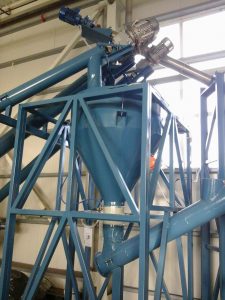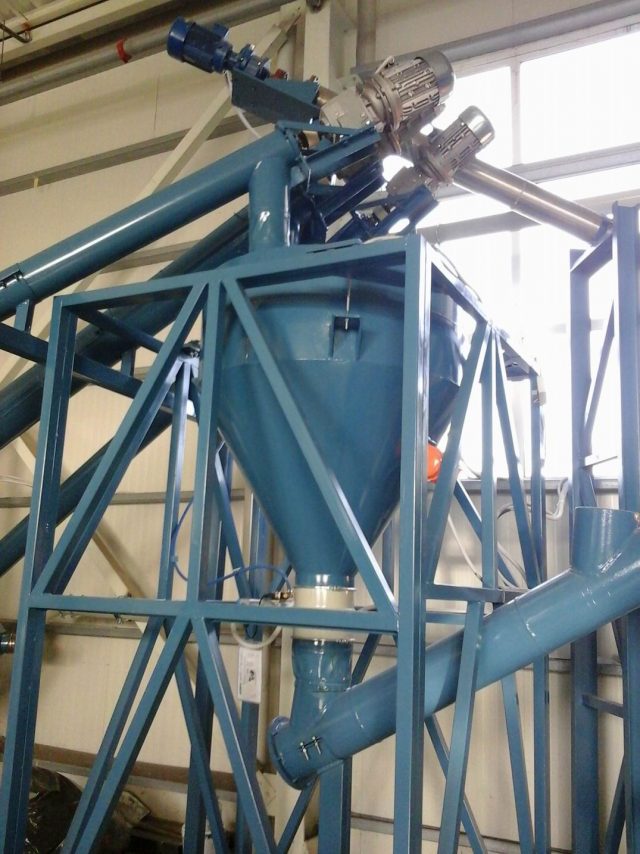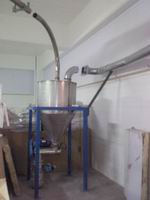Dosing and Weighing Systems
Dosing with screw feeders
DOSING FEEDERS
The ingredients in a recipe must be dosed precisely. Usual feeders are screw conveyors, rotary valves, weighing belts, etc.
For greater precision, we connect the gearmotor reducer with a frequency converter (Inverter) and through PLC automation we monitor the command to the scale. So, for a Setpoint of 350 kg, the feeder doses quickly up to 340 kg, and for the last 10 kg it doses at a slower speed. Today’s PLC automation systems as well as the good quality of the load cells, should give us an accuracy of 0.01% for a Batch of 1000 kg.
Weighing scales
LOSS-IN-WEIGHT FEEDERS

For a discontinuous mixing-in-batches process the dosed raw materials to be mixed must be collected in a weighing scale or a weighing hopper.
A hopper, which rests on load cells connected to a weight indicator, is called a scale or a weighing hopper.
Depending on the recipe, each ingredient (raw material) can have its scale or all the ingredients can be weighed on a scale successively (cumulatively) one after the other.
Belt Weighers – Conveyor Weighing Belts
Belt weighers are used in continuous weighing applications. Keeping two points fixed, the beginning and the end of the conveyor, we weigh the amount of product between these two points over time. Belt weighers display a continuous throughput, i.e. 230 kg/h.
Dosing by vibration – Vibrating feeders
In the case of sensitive or fragile products, dosing can be done with a vibrating feeder. Vibrating feeders consist of a tube with a vibrator or a vibrating scoop. Using a speed regulator (inverter) and in communication with the PLC of the scale, accurate weighing of small quantities is possible.
Weighing automation
Weighing automation is implemented in an automatic dosing and weighing plant. It consists of standardized systems with a weighing hopper with integrated PLC, which also controls 4 dosing screws conveyors, stores and executes recipes, records, and names each batch. Thus production is increased and facilitates traceability, which ensures the quality of correct dosing.














